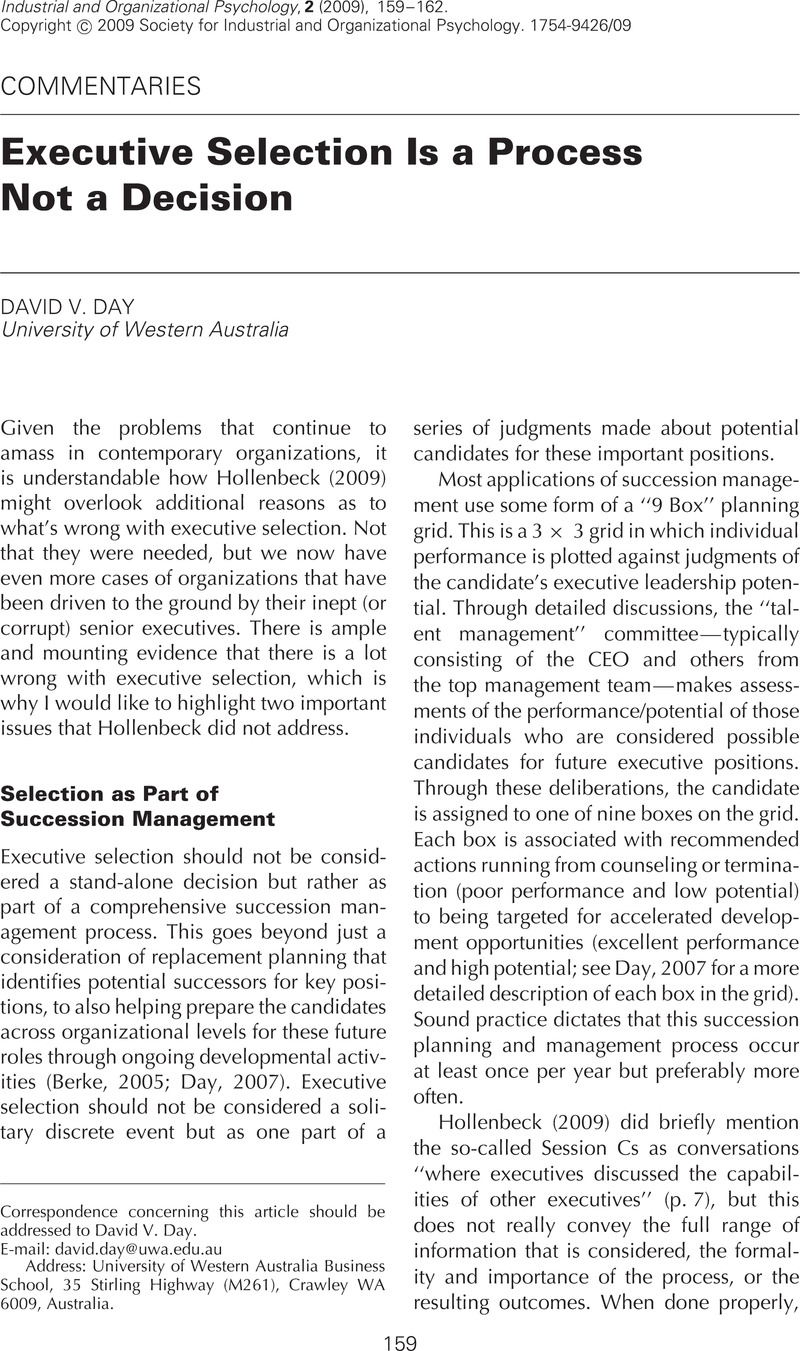Crossref Citations
This article has been cited by the following publications. This list is generated based on data provided by Crossref.
Hollenbeck, George P.
2009.
Executive Selection — Response to Commentaries.
Industrial and Organizational Psychology,
Vol. 2,
Issue. 2,
p.
177.
Viswesvaran, Chockalingam
and
Ones, Deniz S.
2010.
International Review of Industrial and Organizational Psychology 2010 Volume 25.
p.
169.
Klehe, Ute-Christine
2011.
Scientific Principles Versus Practical Realities: Insights From Organizational Theory to Individual Psychological Assessment.
Industrial and Organizational Psychology,
Vol. 4,
Issue. 3,
p.
311.
Silzer, Rob
and
Jeanneret, Richard
2011.
Individual Psychological Assessment: A Practice and Science in Search of Common Ground.
Industrial and Organizational Psychology,
Vol. 4,
Issue. 3,
p.
270.
Klimoski, Richard
and
Amos, Benjamin
2012.
Practicing Evidence-Based Education in Leadership Development.
Academy of Management Learning & Education,
Vol. 11,
Issue. 4,
p.
685.
Kraiger, Kurt
Finkelstein, Lisa M.
and
Varghese, Lebena S.
2019.
Enacting Effective Mentoring Behaviors: Development and Initial Investigation of the Cuboid of Mentoring.
Journal of Business and Psychology,
Vol. 34,
Issue. 4,
p.
403.
Truninger, Margarida
Ruderman, Marian N.
Clerkin, Cathleen
Fernandez, Katya C.
and
Cancro, Debra
2020.
Sounds like a leader: An ascription–actuality approach to examining leader emergence and effectiveness.
The Leadership Quarterly,
p.
101420.
Cadigan, Françoise
Kraichy, David
Uggerslev, Krista
Martin, Kasey
and
Fassina, Neil
2020.
Preferences for Performance versus Potential in Promotion Recommendations.
Canadian Journal of Administrative Sciences / Revue Canadienne des Sciences de l'Administration,
Vol. 37,
Issue. 2,
p.
180.
Laser, Jan
2022.
Criteria to appraise top executives for ambidextrous leadership.
Journal of Organizational Effectiveness: People and Performance,
Vol. 9,
Issue. 3,
p.
449.
Han, Pi-Chi
2022.
A Blueprint of Leadership Development for Female Marriage Migrants: A Pilot Exploration in Taiwan.
Adult Learning,
Vol. 33,
Issue. 4,
p.
168.
Sehatpour, Mohammad-Hadi
Abedin, Behnam
and
Kazemi, Aliyeh
2022.
Talent management in government organizations: identification of challenges and ranking the solutions to address them.
International Journal of Productivity and Performance Management,
Vol. 71,
Issue. 4,
p.
1444.



